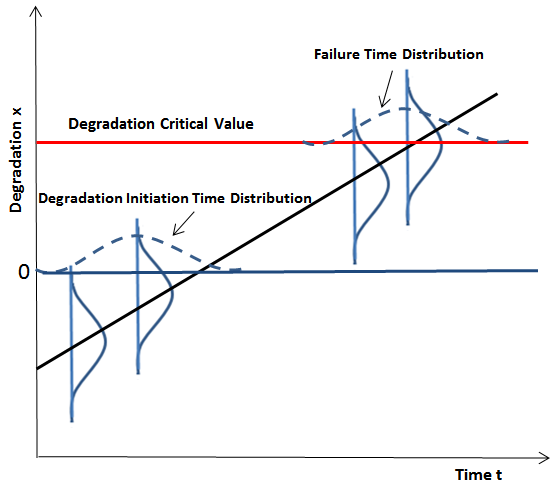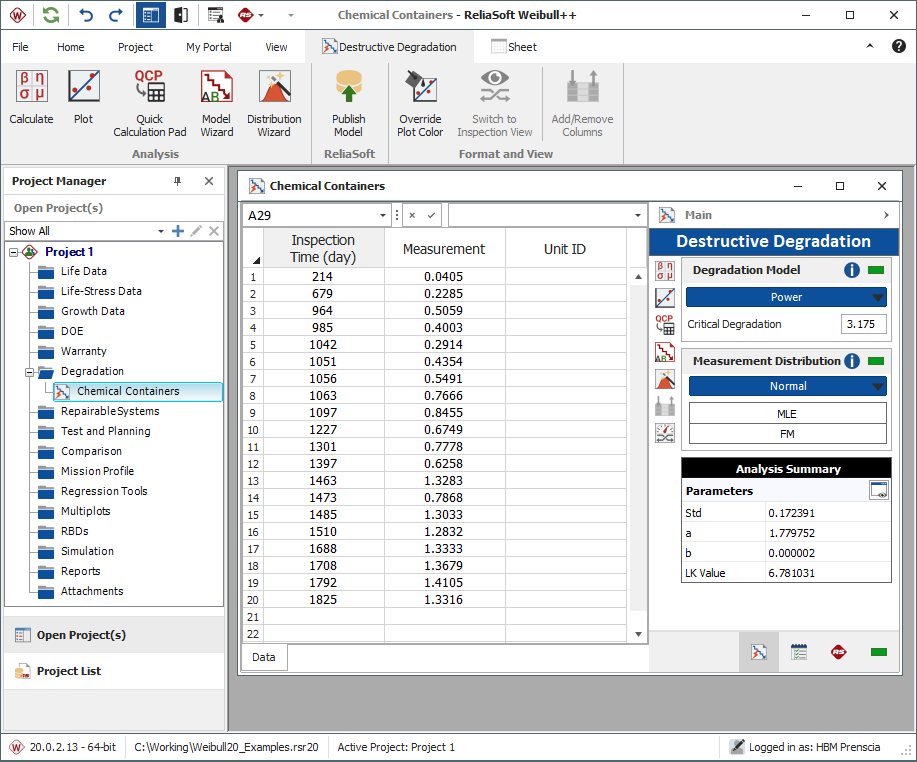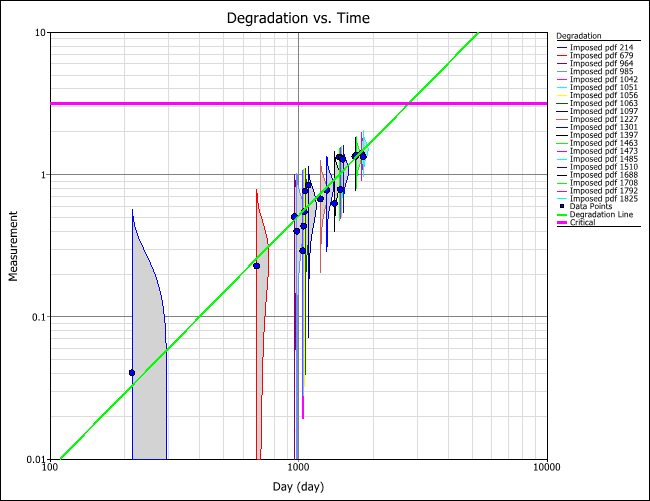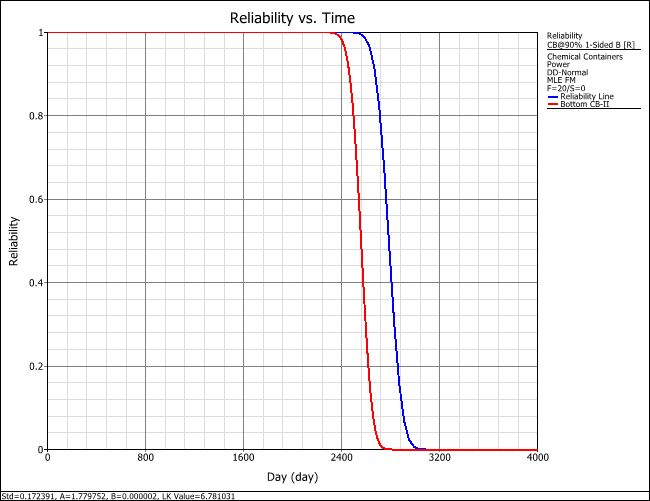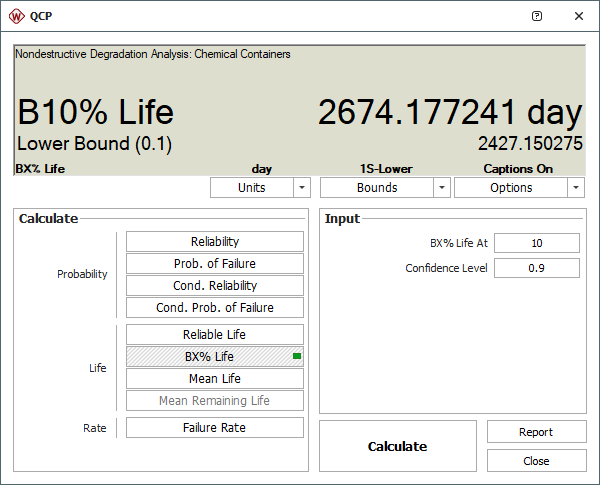A level of degradation or performance at which a failure is said to have occurred should be defined when performing degradation analysis. To obtain time-to-failure data, basic mathematical models can be utilized to extrapolate the measurements over time to the point where the failure is said to occur. These extrapolated failure times can be easily analyzed in the same manner as conventional time-to-failure data.
However, having only one degradation measurement for each item tested, it is impossible to build a degradation model for each individual item and use the model to predict failure time. Therefore, a statistical distribution is needed to represent the variability in the measurement at a given time. This method is called the random process modeling method. In this method, the degradation value is assumed to be a random variable that follows a certain distribution at a given time. In the ReliaSoft Weibull++ destructive degradation analysis folio, any of the following distributions can be used to define the variability in the degradation measurements: Weibull, exponential, normal, lognormal, or Gumbel.
For example, we can assume that the corrosion in a chemical container follows a Weibull distribution at any given time. Subsequently, the scale parameter (η) will decrease with time as the container corrodes over time, while the shape parameter (β) will stay constant since the process of corroding will not change.
The random process modeling method requires that the scale parameters are defined over the entire domain from –∞ to ∞. However, eta (η) for the Weibull distribution and Mean-Time-To-Failure (MTTF) for the exponential distribution are always greater than zero. Thus, natural logarithms of these parameters are used in the random process modeling method. For each distribution the parameters are defined as:
- Weibull: ln(η) is set as a function of time while β remains constant.
- Exponential: ln(MTTF) is set as a function of time.
- Normal: μ is set as a function of time while σ remains constant.
- Lognormal: μ' is set as a function of time while σ' remains constant.
- Gumbel: μ is set as a function of time while σ remains constant.
Once the distribution is selected, the change of the scale parameter with time needs to be defined by a degradation model. Several models are good candidates and used in Weibull++:
- Linear: μ(t) = b + a × t
- Exponential: μ(t) = b × exp(a × t)
- Power: μ(t) = b × t a
- Logarithm: μ(t) = a × ln(t) + b
- Lloyd-Lipow: μ(t) = a − (b/t)
After the distribution and degradation models are chosen and their parameters are defined, the parameters are then calculated using Maximum Likelihood Estimation (MLE).
Previously, we assumed that the corrosion in a chemical container follows a Weibull distribution at any given time. Hence, the unreliability at time t can be derived as:

...where:




